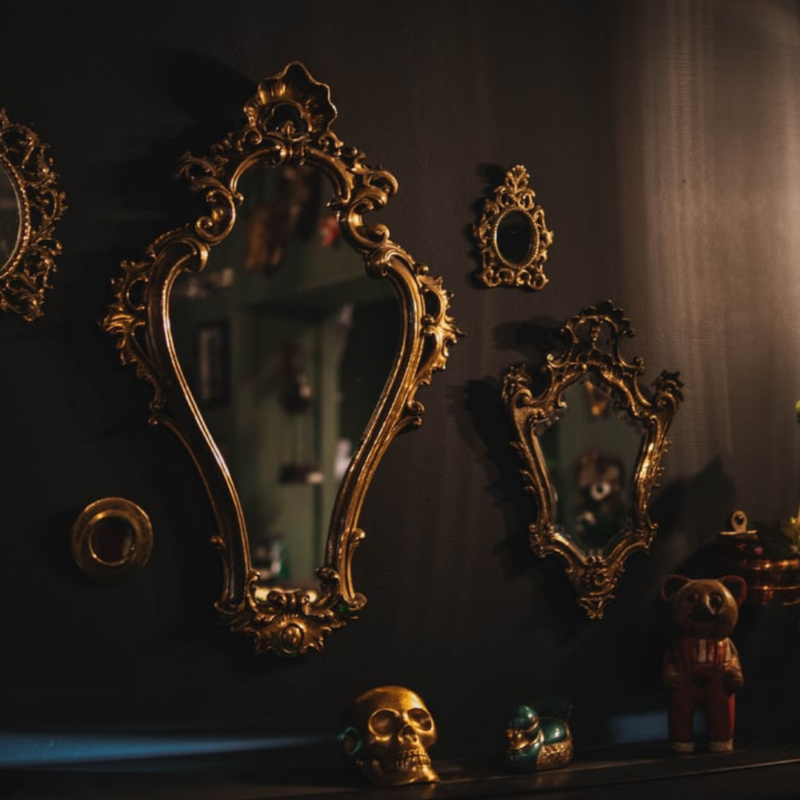No products in the cart.
Mirror Mania Tips
How to Value Your Antique Mirror
Full article with thanks to: valuemystuff.com/uk/blog/how-to-value-antique-mirrors
There is nothing like the mysterious feeling of divine transcendence as one gaze into an antique mirror.
Inviting the looker to directly acknowledge oneself and examine the reflected image within its framework, these objects have the power to incite contemplation and introspection. Today people across the world cannot help but to be intrigued by the allure that antique mirrors possess, and it is a niche of the market that is consistently popular. Did you inherit an heirloom mirror that you would like to have valued? Are you wondering if the piece you bought at the flea market is worth anything? Perhaps you found an old mirror in your basement you would like to know more about. If one has all the right tools, the journey to finding out the value of your item can be a quick and easy one, of which the results may be pleasantly surprised.
A brief history
While people have used polished surfaces and flat bodies of water as reflective devices for thousands of years, it was not until relatively recently that mirrors, as we understand them today, came into existence. In Italy during the 16th century, the first-ever ‘looking glasses’, as they were known, were produced from lead glass using a process of creating flat planes from blown cylinders. Throughout the next few hundred years, techniques and methods would be experimented upon in order to create increasingly effective and beautiful surfaces. These objects would become famous across the globe as items of great opulence and luxury, only affordable to the highest echelons of society. As technology further developed and improved throughout the following centuries and methods of production consequently grew faster and cheaper, mirrors would become available to increasingly more people; today nearly every home across the world has access to these once novel and costly.
Condition
It is important to first examine the quality of the mirror. Whereas in the case of most collectible items, the more optimal its condition, the more valuable it will likely be, this is not necessarily so when it comes to antique mirrors. If your mirror is perfectly uniform with no color, this is likely indicative that it is a modern mass-produced reproduction and thus less valuable. Whereas the mercury used in antique mirrors will oxidize, causing random cloudy blotches across the surface, especially near its edges. Sometimes, a sign or two of the wear of time can be good. However, if there are any cracks in the surface or damage to the mirror’s frame, this will negatively affect your mirror’s worth.
“…an antique item from the Renaissance will without exception be worth a great deal more than even the most expertly produced modern examples.”
Age & Rarity
When it comes to mirrors, it is typically the case that older is better. As goes with the fragile and delicate nature of their material, it is rare that a mirror will stand the test of time past several decades nonetheless a few centuries; Thus an antique item from the Renaissance will without exception be worth a great deal more than even the most expertly produced modern examples. There are a variety of ways to ascertain how old your mirror is. Antique pieces will have wooden backings instead of paper. Often time, there will be a mark indicating the maker and origin. Hand-forged fasteners will be noticeably less uniform than their machine-produced counterparts. The material of the frame can be telling as well; an antique mirror will feature wood, wood veneer, plaster composition, or metal.
Appraisal
Of course, the most essential measure to take in finding the value of your antique mirror is to seek professional appraisal. While even the most painstakingly thorough of amateurs are easily prone to error in the process, a trained expert in the field will be able to take their years of experience and knowledge into account in order to find the most accurate estimate possible. Conveniently enough, you can consult just such a professional in appraisal and valuation here at Value My Stuff, so that you can find out more about your antique mirror as soon as you deem necessary.
Full article with thanks to: valuemystuff.com/uk/blog/how-to-value-antique-mirrors
Did you enjoy that? Why not share this article.
Looking for unique, handcrafted art deco pieces? Explore our online shop for your next interior piece!


